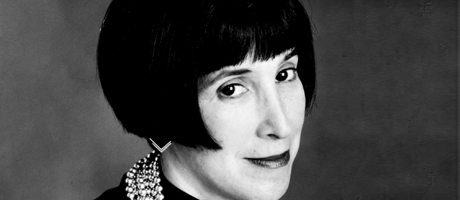By Menachem Wecker
As the newly appointed director of the Judaic Studies program at GW, Jenna Weissman Joselit has some fresh ideas about the program and its future.
“Making lots of room for the arts within the Judaic studies curriculum is high on my agenda,” says Dr. Weissman Joselit, who joined GW as the Charles E. Smith Chair in Judaic Studies last year and will assume her new position July 1. “I also would like the program to work collaboratively and in partnership with the Library of Congress and other cultural institutions in our nation’s capital.”
Dr. Weissman Joselit, who is celebrating her 10th anniversary as a columnist for the American Jewish newspaper the Forward, is an expert on American Jewish culture and history whose research focuses on the connections between identity and material culture. A prolific writer, Dr. Weissman Joselit has authored eight books and is working on a ninth about the Ten Commandments and American culture.
Last semester, Dr. Weissman Joselit taught two courses: Jewish Geography: Surveying the American Jewish Landscape and a Dean’s Seminar titled Let’s Eat: Food and American Culture, a topic on which she recently presented to the Columbian College of Arts and Sciences’ National Council. In the talk, she explored three examples--seafood, frozen food and dieting--that highlight the cultural importance of food in the nation.
This semester, Dr. Weissman Joselit is teaching a graduate seminar on the Ten Commandments in modern America as well as a companion course to the Jewish geography course titled Jewish Lives in 19th- and 20th-century America, which each week focuses on a different American Jewish personality.
Dr. Weissman Joselit intends to develop more of these sorts of interdisciplinary courses, which showcase the program’s distinguished faculty and enable Judaic Studies to work together with departments and programs throughout the university.
“I’m eager to try my hand at teaching several brand new courses, which range from a historical look at the relationship between technology and tradition to an interdisciplinary inquiry into The Merchant of Venice,” she says. She will also continue to teach the Jewish geography course, as well as other offerings on American Jewish history.
For Dr. Weissman Joselit, research on American Jewish culture does not end in the library, the archives or the classroom.
A curator of and a consultant to dozens of exhibitions in the United States and Israel, including one that focused on summer camping in America, she is currently working on an exhibition, scheduled to open in the fall at the National Yiddish Book Center in Amherst, Mass., which focuses on the ways the home looms large in American Yiddish and Jewish literature.
“Visitors who expect a traditional library display will be in for a real surprise,” she says. “The exhibition will draw on the latest technology to animate and enlarge the presence of the printed word. It will have a real Alice in Wonderland quality.”


